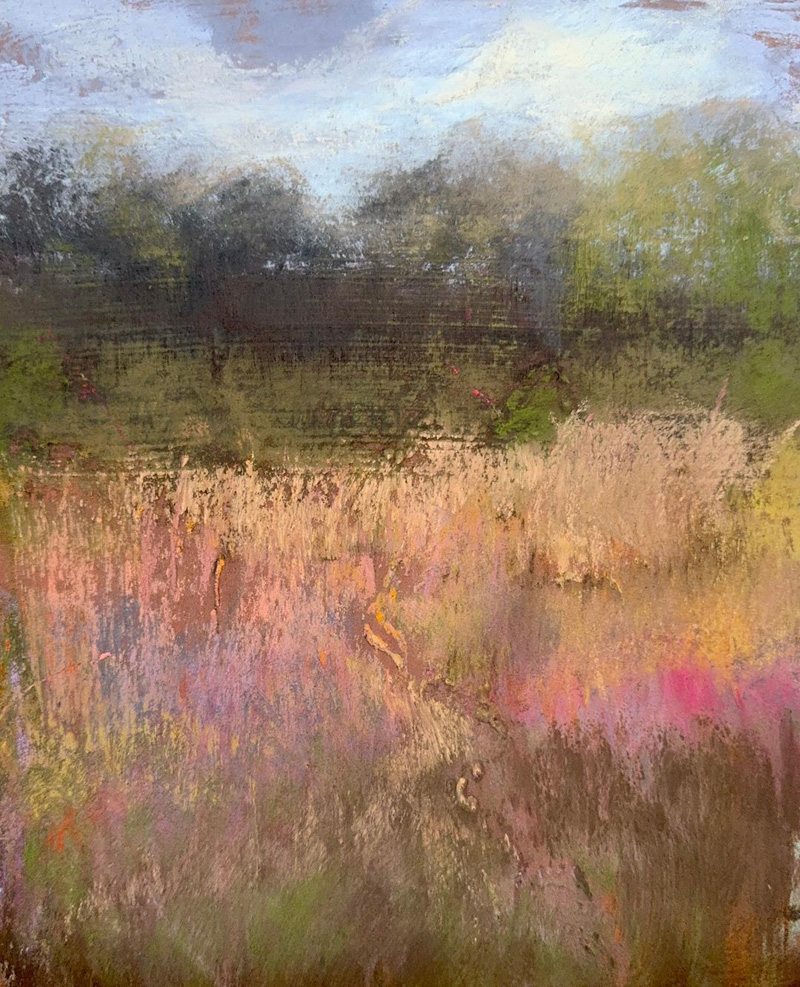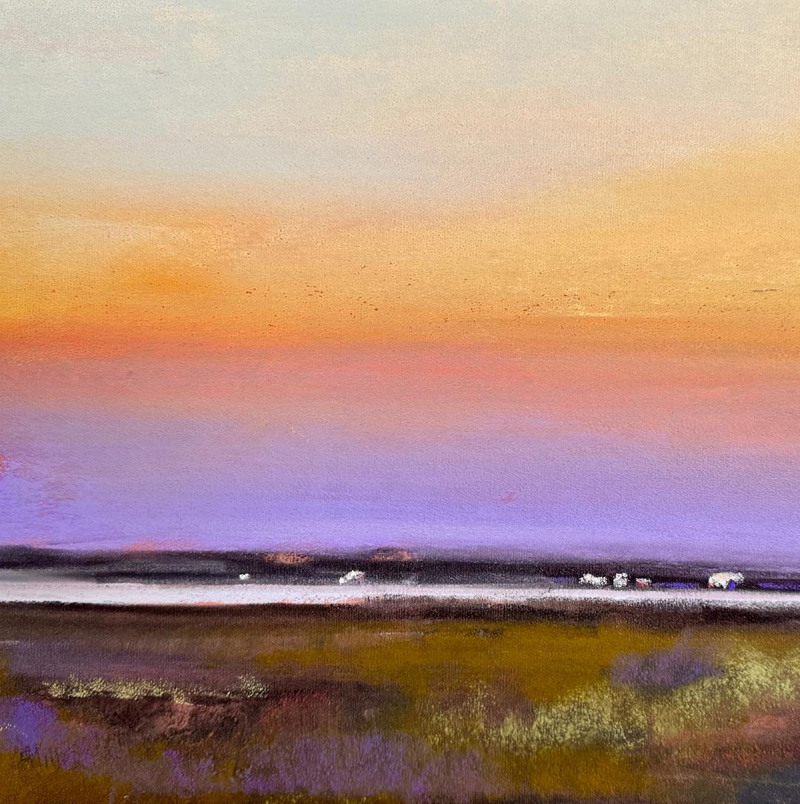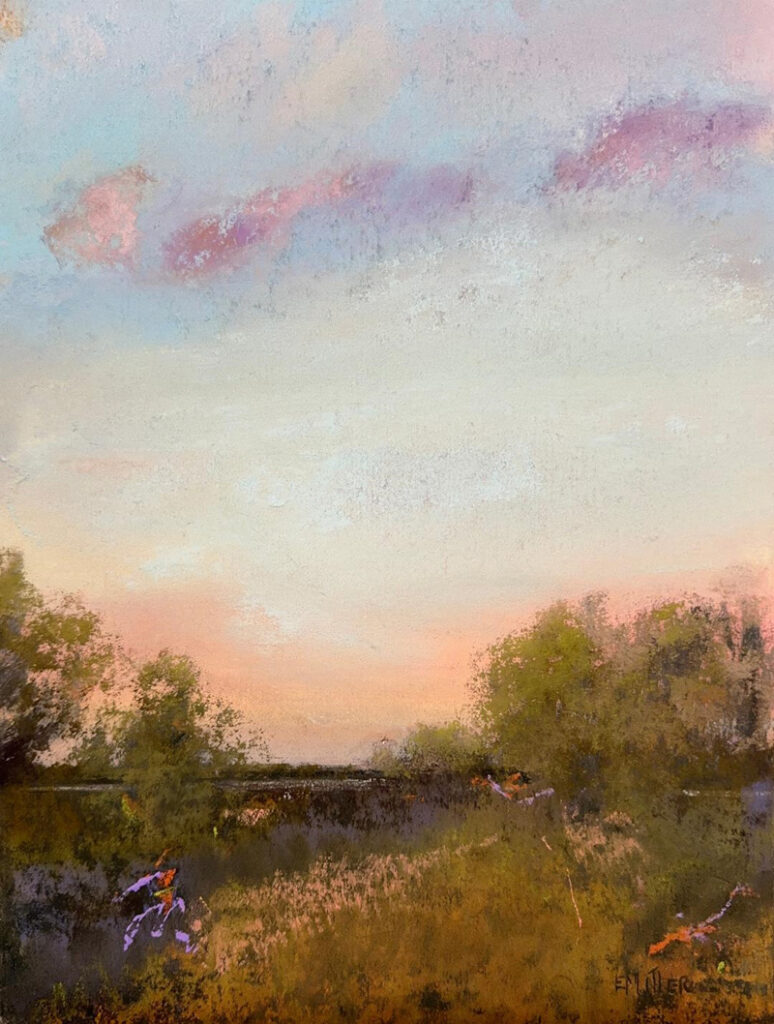Consider these insights on the importance of establishing a daily art practice—and the benefits it can yield over time.
By Eve Miller
“The study of art is a lifetime matter. The best any artist can do is to accumulate all the knowledge possible of art and its principles, study nature often and then practice continually.”
Edgar Payne (American, 1883–1947)
This article is excerpted from the Fall 2024 issue of Pastel Journal. Read the rest of the article—and other inspiring artist features and columns—in the print or digital edition.
My first introduction to art-making took place in my 60s, after having retired from teaching French and Spanish for 35 years. Fortunately, art found me at a time when I had the luxury to take classes and workshops from talented contemporary artists.
To accelerate my artistic development, I embarked on a daily painting practice to push creative possibilities and improve my skills and techniques. I’ve now been practicing every day for more than five years. Over time, I noticed that the work I submitted to exhibitions was accepted more frequently than the paintings submitted before having begun my practice, which has been a delightfully unexpected outcome.
10 Tips to Make it Happen
My advice for aspiring artists is to commit to a daily painting practice—and to reap the benefits that build over time. If you’re interested in establishing your own practice, consider the following.
1
Set aside a dedicated time. It’s important to carve out time to create, even if it’s just 5 minutes a day. This isn’t the time to try to complete a painting. It’s a time to explore—to doodle, sketch, make thumbnails, create a color study or test pastels. You’ll be surprised by what you can learn in a short amount of time. I usually spend 30 minutes daily, setting a timer as a reminder to stop and assess my work before I move on with the rest of my day.
2
Be consistent. I’m a morning painter, so my daily morning practice serves as a great warm-up. Observe the time of day you have the most energy and the fewest distractions, and commit to a standing date.
3
Find a trigger. It can be intimidating to sit down and “be creative.” I’ve found that inspirational quotes, art books and other artists’ works help to ignite my daily practice. They ground me and give me something to focus on while working.
4
Remind yourself why you’re painting. I usually focus on a creative intention for the day, which I write on an index card and place on the easel. I find it’s also important to remember why I paint. Know your why(s).
5
Find a happy place. The more you like the space in which you’re working—and the materials on hand that you’re using—the more you’ll enjoy and appreciate your sacred creative time.
6
Go outside. It’s important to observe nature’s random beauty for inspiration. When I go for a walk, I focus on enjoying the moment, but I also try to memorize what catches my eye. I’ve learned that my “memory paintings” have a more spontaneous feel than those scenes I captured and referenced with my smartphone.
7
Prep and show up at the easel most days. I’ve learned that it’s much easier if I set up my easel and materials the night before, so I’m all set and ready to go the next morning.
8
Be accountable. It takes time, motivation and inspiration to paint. I post my daily practice outcomes on social media, not for the likes but because it makes me accountable. I love my solitude but I find interaction necessary for follow-through.
9
Let go of judgment. Even if things don’t turn out the way you think they should, it’s a much more joyful experience when you’re open to the process. Remember that you’re not defined by negative opinions—yours or others’—and move forward.
10
Find inspiration that speaks to you. It can be difficult to commit to a daily practice, but if you’re inspired by your subject, process, materials, etc., you’ll be more likely to continue. That’s where the beauty lies.



About the Artist
Eve Miller, of Beaufort, S.C., is an instructor and award-winning pastelist. She’s a Signature Member of the Pastel Society of America and a Master Circle Member of the International Association of Pastel Societies, as well as a member of several other art societies and organizations. Follow her daily painting practice on Instagram.
